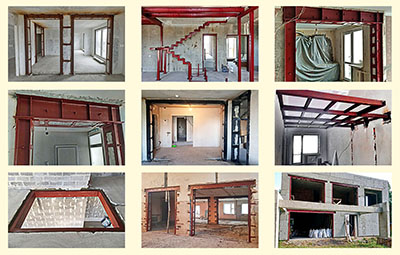Wood impregnation – differences between indoor and outdoor use
- Просмотров: 574
Wood impregnation protects timber structures across Canada's diverse climate zones. This treatment shields wood from environmental challenges, ensuring durability for residential and commercial buildings. It's crucial for safeguarding timber against potential damage.
Different environments require unique timber protection strategies. Canadian homeowners and builders know that protecting wood needs tailored approaches. Indoor and outdoor wood impregnation techniques vary greatly.
Exterior wood treatments must withstand extreme temperatures, moisture, and UV radiation. Interior wood protection focuses on aesthetics, fire resistance, and preventing structural degradation.
Understanding these methods helps property owners choose the right treatments. Professional application ensures wood stays resilient against environmental stressors. It also maintains the natural beauty of the timber.
Understanding Wood Impregnation Fundamentals and Methods
Wood impregnation protects and extends the life of wooden materials. Experts choose the right chemical treatment to ensure wood's durability and performance. This process enhances wood's resistance to environmental challenges, decay, and structural damage.
*Pressure treatment* is a top method for deep chemical penetration into wood fibers. It forces preservatives into wood under high pressure. This creates a protective barrier against moisture, insects, and fungal growth.
Pressure Treatment Techniques
Industrial facilities in Canada use advanced pressure treatment tech. This improves wood's long-term performance. The method shields wooden materials from various threats.
Modern Chemical Compounds in Wood Protection
New wood treatments use advanced compounds for maximum protection. These solutions defend against decay while being eco-friendly. Manufacturers focus on sustainable practices in their product development.
Environmental Considerations in Treatment Methods
The wood treatment industry is moving towards greener solutions https://domspiration.pl. New chemical formulas reduce toxic emissions and are more environmentally responsible. Researchers aim to protect wood while maintaining ecological balance.
Essential Differences in Outdoor Wood Protection Requirements
Outdoor wood faces unique challenges in Canada's extreme climate. Wood preservation is crucial for structures exposed to UV radiation, moisture, and temperature swings. These conditions test wood durability to its limits.
Decay resistance is vital for exterior wood applications. Decking, fencing, and structural timber need robust protection against environmental stressors. *Pressure-treated wood* defends against fungi, insects, and moisture that can weaken structures.
Wood preservation must address specific regional issues. In Canada, treatments need to withstand rapid freeze-thaw cycles. Special compounds create a protective barrier in wood fibers.
UV-resistant treatments shield outdoor wood from sun damage. These methods prevent cracking, warping, and loss of structural strength. Experts advise regular upkeep of protective coatings for long-term decay resistance.
Choosing the right wood preservation method depends on several factors. These include wood type, intended use, and exposure conditions. Professionals weigh environmental impact, durability, and performance when recommending treatments.
Indoor Wood Impregnation: Protection and Aesthetics
Indoor wood protection balances function and visual appeal. Treatments create safe, long-lasting surfaces that maintain natural beauty. They also provide essential protection against potential damage.
Indoor wood treatments differ from exterior ones. They focus on maintaining aesthetic quality and fire resistance. These treatments also prevent rot in interior wood structures.
Fire-Retardant Treatments for Interior Wood
Modern fire-retardant treatments penetrate wood fibers, creating a protective barrier. This barrier significantly reduces flammability. Specialized chemical compounds transform standard wood into a safer material for homes and businesses.
These treatments help meet strict building safety requirements. They provide peace of mind for property owners and occupants.
Non-Toxic Solutions for Living Spaces
Many homeowners now prefer non-toxic wood treatment options. New impregnation techniques use eco-friendly compounds to protect wood. These treatments safeguard the wood's structure without introducing harmful chemicals.
This approach ensures the well-being of both the wood and the people living around it.
Decorative Impregnation Techniques
New impregnation methods enhance wood aesthetics while providing protection. Color-infused treatments and transparent protective layers preserve wood's natural beauty. These techniques also extend the wood's functional lifespan.
Experts recommend regular inspections to maintain indoor wood impregnation effectiveness. This helps ensure long-lasting protection and beauty for your wood surfaces.
Weather Resistance and Decay Prevention for Exterior Applications
Canada's tough climate demands special protection for outdoor wood. Rot prevention is vital when wood faces moisture, temperature changes, and biological threats. Professional treatments help wooden structures stay strong and attractive in harsh environments.
New waterproofing techniques use advanced chemicals that soak deep into wood fibers. Nano-technology based solutions guard against water, fungi, and insects. These treatments create a strong shield while keeping wood's natural look.
Pro wood preservation uses multiple defense layers. Exterior treatments include special sealants, water-resistant coatings, and preventative chemicals. These methods extend wood's life by blocking moisture and preventing rot in outdoor structures.
Choosing the right rot prevention depends on environment and wood type. Options include pressure-treated lumber, marine sealants, and eco-friendly coatings. Homeowners must carefully consider their needs to pick the best method.
Regular upkeep is key for long-term wood protection. Frequent checks, quick fixes, and reapplying treatments ensure lasting weather resistance. Investing in quality waterproofing saves money by preventing costly damage.
Wood Impregnation Techniques for Different Wood Species
Wood preservation varies for different timber types. Each species needs specific protection strategies for best durability. Understanding unique wood characteristics is key for effective timber protection.
Wood preservation is complex due to each wood type's distinct properties. Softwoods, hardwoods, and exotic species all need specialized treatment methods.
Softwood Treatment Approaches
Softwoods like pine, spruce, and cedar need targeted preservation techniques. Pressure treatment is a primary method for enhancing timber protection. These woods absorb chemical preservatives easily, creating strong defense against moisture and decay.
Hardwood Preservation Strategies
Oak, maple, and birch require more complex preservation methods. Their dense structure needs specialized penetrating treatments to protect internal integrity. Professional techniques often use multiple preservative layers for full coverage.
Exotic Wood Species Considerations
Exotic woods present unique challenges in timber protection. These materials often come from tropical regions with distinct environmental characteristics. Specialized techniques must address their unique cellular structure and natural resistance.
Wood preservation professionals must adapt strategies for different wood species. Choosing the right treatment approach ensures longevity and preserves wood's natural beauty.
Maintenance and Longevity: Indoor vs Outdoor Treated Wood
Durable lumber needs different care for indoor and outdoor use. Wood preservation techniques extend the life of treated wood in various Canadian settings. Indoor wood treatments usually need less care than outdoor surfaces.
Exterior wood in Canada faces extreme weather challenges. Experts suggest yearly checks for outdoor lumber to spot early treatment wear. Sun, rain, and temperature changes can break down wood treatments faster.
Indoor wood care focuses on avoiding moisture and insects. Clean treated indoor wood with mild cleaners and keep it dry. Regular checks can catch problems early, protecting the wood's structure.
Proper care makes wood treatments cost-effective over time. Good initial treatment and care can make wood last decades longer. Experts recommend a care plan based on the environment and wood type.
































